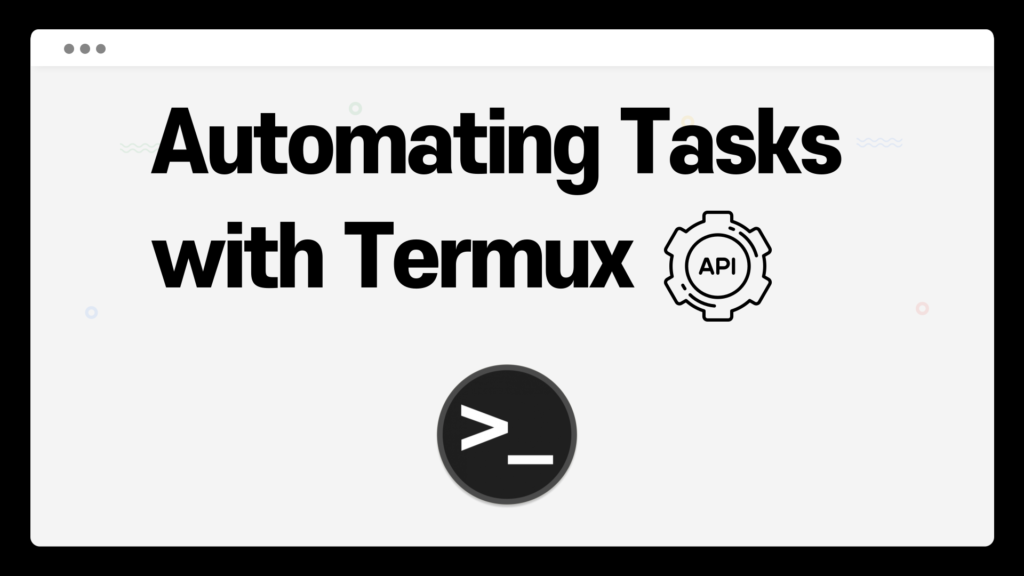
Automating Tasks With Termux Api
In the ever-evolving landscape of Android customization and automation, enthusiasts are constantly seeking innovative ways to streamline their digital workflows and enhance the functionality of their devices. At the forefront of this movement stand two powerful tools: Tasker, renowned for its unparalleled automation capabilities, and Termux, celebrated as a versatile terminal emulator and Linux environment for Android. In this comprehensive guide, we will embark on a journey to explore the symbiotic relationship between Tasker and Termux API, unlocking a world of possibilities for automating tasks, executing custom scripts, and pushing the boundaries of Android automation.
Unveiling Tasker’s Versatility
Tasker has long been hailed as the Swiss Army knife of Android automation, offering users an extensive array of tools and features to create personalized workflows and automate routine tasks. With its intuitive interface and robust functionality, Tasker empowers users to orchestrate a symphony of actions with a single tap, from toggling settings and launching apps to sending messages and controlling IoT devices. Its flexibility and adaptability make it a favorite among power users and enthusiasts seeking to tailor their Android experience to their unique preferences.
Introducing Automating Tasks with Termux Api
Enter Termux, a beloved terminal emulator and Linux environment for Android that transforms smartphones and tablets into powerful computing devices. With access to a vast repository of command-line tools and utilities, Termux enables users to harness the full power of the Linux ecosystem directly on their Android devices. However, what truly sets Termux apart is its API, a bridge that connects Tasker’s automation capabilities with Termux’s command-line prowess, opening up a world of possibilities for seamless integration and advanced automation.
The Fusion of Tasker and Termux API
By integrating Tasker with Termux API, users can unlock the full potential of both platforms and harness their combined strength to automate complex tasks and execute custom scripts effortlessly. Tasker serves as the orchestrator, triggering Termux commands and scripts using the Termux API, while Termux acts as the executor, seamlessly executing commands and scripts within its Linux environment. This powerful synergy enables users to create sophisticated automation workflows that leverage the full capabilities of the Android operating system and the Linux command line.
Practical Applications and Use Cases
The fusion of Tasker and Termux API opens up a myriad of practical applications and use cases, limited only by the user’s imagination. Here are just a few examples of what is possible:
- Custom Notifications: Use Tasker to monitor system events and trigger Termux scripts to generate custom notifications or alerts based on predefined conditions.
- File Management: Automate file transfers, backups, and synchronization tasks using Tasker to trigger Termux commands for seamless file management on your device.
- System Monitoring: Create scripts to monitor system resources, network activity, or battery usage and trigger actions such as notifications or automated responses using Tasker and Termux API.
- IoT Integration: Control IoT devices, home automation systems, or remote servers by sending commands via Termux API from Tasker, enabling seamless integration and control.
- Web Scraping and Automation: Utilize Tasker to initiate web scraping tasks and process data using Termux scripts, enabling advanced automation workflows for web-related tasks.
Getting Started: A Step-by-Step Guide
To begin Automating Tasks with Termux Api, follow these simple steps:
- Install Tasker and Termux: Download and install Tasker and Termux from the F-droid onto your Android device.
- Enable Termux API: Launch Termux and run the command
termux-setup-storagefollowed bytermux-apito enable the Termux API. - Create Profiles and Tasks in Tasker: Use Tasker’s intuitive interface to create profiles and tasks that trigger Termux commands or scripts using the “Run Shell” action with Termux API commands.
- Test and Iterate: Experiment with different commands and scripts, testing their functionality and refining your automation workflows to suit your needs.
Conclusion:
In conclusion,Automating Tasks with Termux api represents a powerful synergy that empowers Android automation enthusiasts to push the boundaries of what is possible on their devices. By combining Tasker’s intuitive interface with Termux’s command-line prowess, users can create sophisticated automation workflows, execute custom scripts, and unlock the full potential of their Android devices. Whether you’re a seasoned automation enthusiast or a curious newcomer, the fusion of Tasker and Termux API offers endless opportunities to enhance your Android experience and streamline your digital workflows. So why wait? Dive in, explore, and unleash the full potential of Android automation today!